If the first two turbulent years of the decade taught us anything, it’s that you can’t put a price on having a garden. Well, you can actually; to the tune of £164’000, a figure no doubt massively inflated due to an enduring pandemic-related pining for the great outdoors.
That said, not all gardens were created equal, with some less curated towards relaxation than others. In fact, when a garden goes from carefully cultivated to overgrown and out of hand, it can start to bring stress to the homeowner, which rather defeats the point of the space, don’t you think?
If you’re looking to give your garden a lift, makeover, revamp or even if you’re building a new one from scratch, here’s how to design a garden built to inspire happiness and tranquillity.
Focus On Fun Above Function
The garden is the only domestic space that isn’t primarily focused on function. Let’s break it down; the bedroom, bathroom, living room, toilet and kitchen (the word coming from the Latin coquere, ‘to cook’) all point to their necessary function occurring within, without which we wouldn’t be able to survive. But the word garden comes from the Middle English gardin, which simply refers to an enclosed, private space.
And if we’re to use a little poetic license here, that etymology should serve as a prompt to use your garden as its own private escape from the more functional considerations of the rest of the house.
First and foremost, your garden should bring you joy. Some people want to grow vegetables and enjoy carefully planted flower beds, others just want a place to barbecue with friends. But when it comes to wellness, an obvious choice is a swimming pool.
According to Anxiety UK “Regular swimming, even just half an hour at a time, is known to be effective for lowering incidences of depression and anxiety and improve sleep patterns”. This is because “swimming releases endorphins, the natural feel-good hormones that lead us to experience a greater sense of happiness and wellbeing”. Installing a pool when square footage is limited is not an impossible task, you just need to get a little creative.
When redesigning, always think about the purpose of your garden in terms of the pleasure it could bring you – don’t try to make it something you think it should be, make it something you want. That’s the only way to turn an empty plot into a place where you can relax after even the busiest of days. All you have to do is pick up a pencil and paper, and get plotting!
Read: How to transform your garden into a wellness space
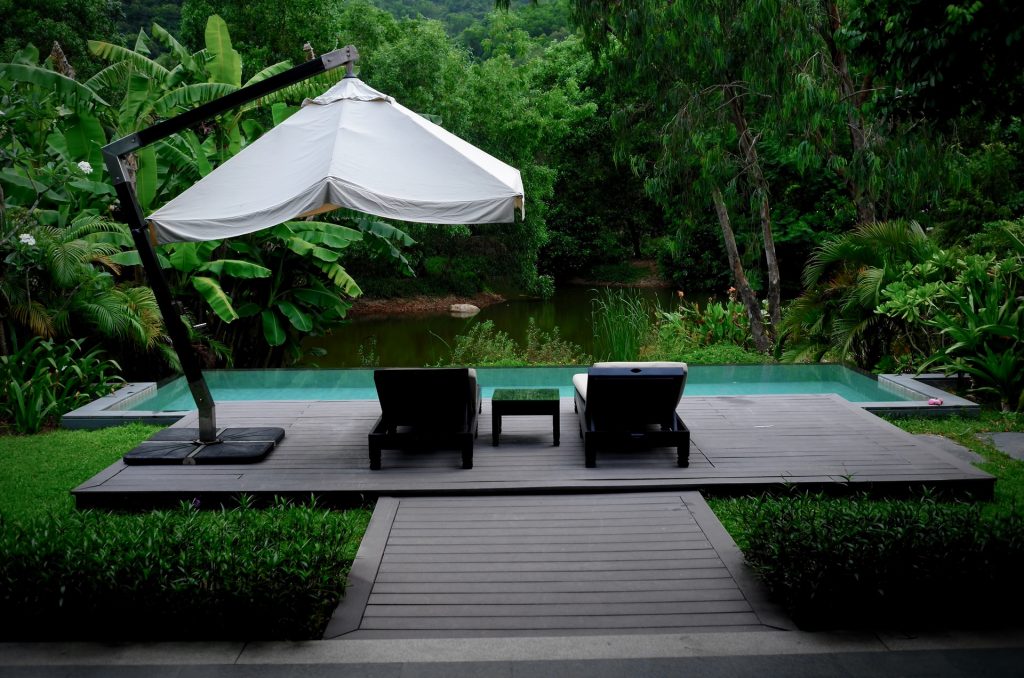
The Ideal Chill-Out Space
That sense of prioritising fun over function should extend to the garden furniture you choose, too.
So often when it comes to furniture in the garden, homeowners view it as something functional and nothing more. While garden furniture certainly serves a functional purpose, it can also act as décor and a pop of interest.
When shopping for the perfect furniture, consider such things as the material, finish, size, style how many it seats, how durable it is, what’s required maintenance-wise, and if it works with the overall design concept. Garden benches made from aluminium are popular thanks to the fact they’re low-maintenance, long-lasting and add a sense of sophistication and elegance to any outdoor space.
Of course, furniture is only one part of the ideal relaxation space outback. For more on how to create the ultimate garden chill-out area, you know what to do.
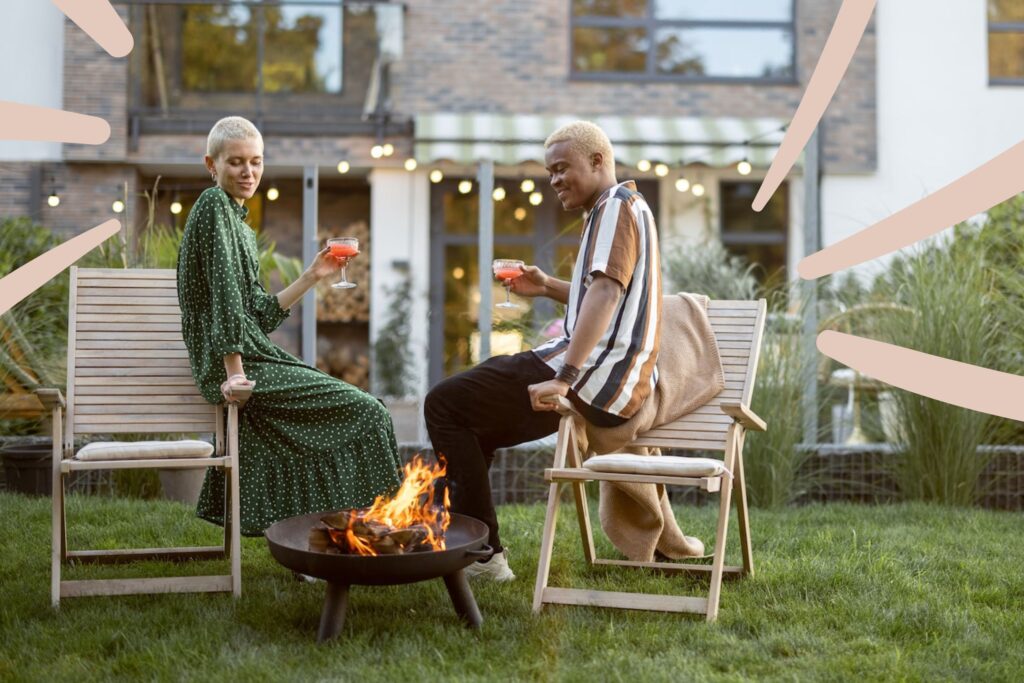
Zone & Flow
Ponds, a BBQ area, a vegetable patch, a new shed…each space represents an area that can be ‘zoned’ to draw aesthetic distinction in the garden and make the whole space feel more organised.
Mark on your plan where there is more shade and sunlight in the garden. This makes it easier to choose the ideal location for a garden room, pergola, swimming pool, or rose beds.
But this thing isn’t purely longitudinal. One of the easiest ways of zoning areas of your garden is to create new and contrasting levels, utilising the vertical instead of the horizontal. This is especially true if you have a smaller garden that you want to maximise space in, as building upwards rather than out won’t impact on those valuable square metres at ground level.
Vertical zoning is also intriguing visually, and not at all difficult to implement. Consider raised decking areas, raised planters and elevated patio stones to create these discrepancies in height that can help you zone even a small garden in a neat way.
It’s also essential that you consider the flow of your garden. Nope, we’re not talking about water features (although they might be an interesting addition, too) but rather, the way in which you travel through your outdoor space. And more importantly, if this journey is optimised with tranquillity and ease in mind.
A walkway or simple garden path can be worked into your current landscape to give the feeling that you’re transitioning from the oppression of four walls to somewhere mystical and magical. Depending on the layout of your garden, you can incorporate a winding or straight pathway and use garden lanterns, hedgerows, and trees to line the way.
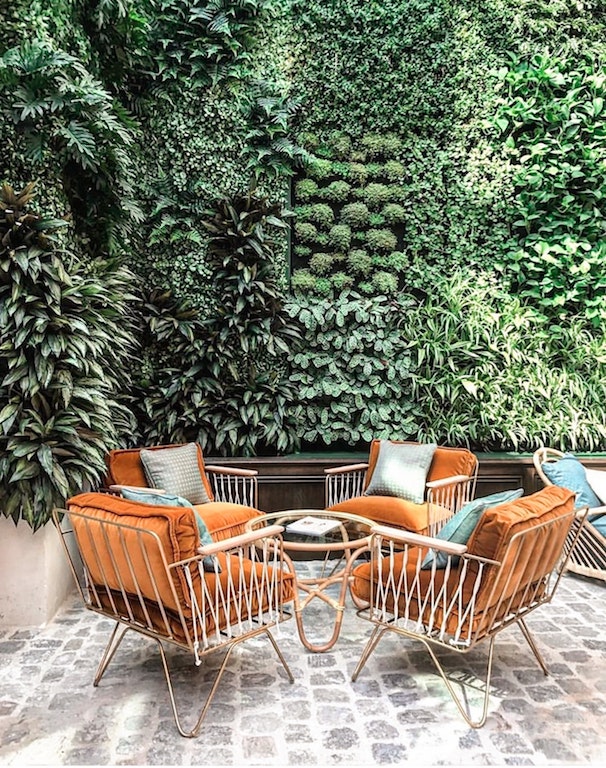
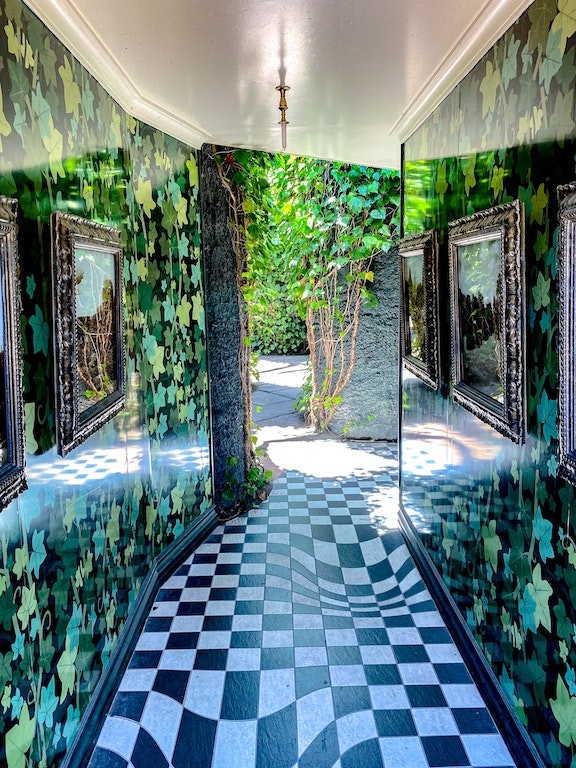
Plant For Shade…
The most common mistake when renovating or establishing a garden is the wrong choice of plants. We mentioned before to plan where the light hits – this is really important for planting. Generally, larger trees and conifers that provide shade belong at the side of the garden, to create shade. Watch out – they grow quickly, and can block out all the natural light when too large.
Good alternatives include flowering shrubs such as honeysuckle, quince or lilac. They are softer, and will create a beautiful and undemanding hedge that doesn’t require too much care. Smaller shrubs and flowering perennials should ideally be planted in front of these. Do not plant them on their own, they do best in groups of the same species. Let stand out plants such as conifers, magnolias or ornamental cherries stand tall alone, instead.
…& For Privacy
It’s not only the sun you want to protect yourself from in the ultimate garden chill-out area, particularly if your outdoor space is in the urban setting and prone to potential prying eyes peering down into your garden.
Consider a few simple steps to more privacy in your garden space, which will be a welcome move from the perspective of both parties. Though it’s impossible to totally shroud your garden in secrecy (and let’s face it; that would look like you were up to no good), you can certainly protect your privacy and improve the natural feel of your chillout space with consciously positioned, tall shrubbery and free standing plants. This is far preferable to erecting clumsy fences we think, as there’s aesthetic beauty added to the mix, too.
The connoisseur’s choice in terms of so-called screening plants is Umbrella Bamboo (Fargesia Murielae) which on average stands at four metres tall, and just requires some sturdy canes for support. The thick shrubbery offers privacy and shade effortlessly, and requires little upkeep; just trim each June or July and water judiciously when the plant re-emerges. Magnolia Grandiflora is another smart choice, whose glossy, generous leaves act as a screening tree when left to do their thing.
If your garden is overlooked, consider a wooden pergola that can turn an exposed deck into an intimate space while still feeling open and inclusive.
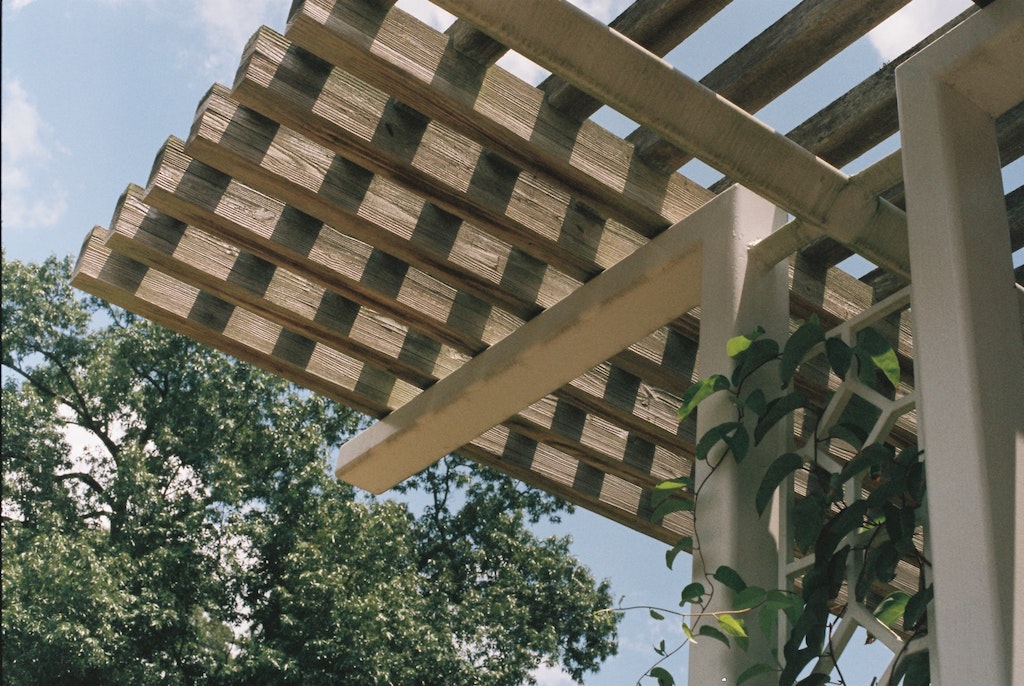
Ensure That Your Garden’s Other Residents Are Happy, Too
Gardens are symbiotic spaces that can only fully flourish if all their inhabitants are happy. Nobody wins unless everybody wins, after all, and accordingly, make sure you check out these 10 ways to make your garden more wildlife friendly.





